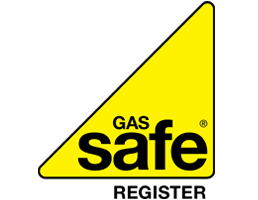Deprecated: Function wp_targeted_link_rel is deprecated since version 6.7.0 with no alternative available. in /var/www/vhosts/ukooa.co.uk/httpdocs/wp-includes/functions.php on line 6121
Deprecated: Function wp_targeted_link_rel_callback is deprecated since version 6.7.0 with no alternative available. in /var/www/vhosts/ukooa.co.uk/httpdocs/wp-includes/functions.php on line 6121
Deprecated: Function wp_targeted_link_rel is deprecated since version 6.7.0 with no alternative available. in /var/www/vhosts/ukooa.co.uk/httpdocs/wp-includes/functions.php on line 6121
Deprecated: Function wp_targeted_link_rel_callback is deprecated since version 6.7.0 with no alternative available. in /var/www/vhosts/ukooa.co.uk/httpdocs/wp-includes/functions.php on line 6121
Deprecated: Function wp_targeted_link_rel is deprecated since version 6.7.0 with no alternative available. in /var/www/vhosts/ukooa.co.uk/httpdocs/wp-includes/functions.php on line 6121
Deprecated: Function wp_targeted_link_rel_callback is deprecated since version 6.7.0 with no alternative available. in /var/www/vhosts/ukooa.co.uk/httpdocs/wp-includes/functions.php on line 6121
Deprecated: Function wp_targeted_link_rel is deprecated since version 6.7.0 with no alternative available. in /var/www/vhosts/ukooa.co.uk/httpdocs/wp-includes/functions.php on line 6121
Deprecated: Function wp_targeted_link_rel_callback is deprecated since version 6.7.0 with no alternative available. in /var/www/vhosts/ukooa.co.uk/httpdocs/wp-includes/functions.php on line 6121
The Common Causes of Low Water Pressure at Home
It can be nothing short of frustrating when your water pressure drops in your home, making everyday tasks like washing up and having a shower a troublesome task. You will struggle to fix the water pressure in your home without first identifying what is causing the problems, so we have compiled this handy guide on the most common causes of low water pressure at home, and how to fix it.
The 5 most common causes of low water pressure
1. Unopened valves
There are often two main shut-off valves used to control the flow of water around your home, and if one of these is unopened or switched off – even slightly – it can cause your water pressure to be far weaker than it should be. If you are worried that this might be the cause of your lousy water pressure, check both of these valves and ensure that they are completely open.
2. A cracked or leaking pipe
Another possible reason behind your low water pressure is that your pipes are cracked or leaking. This is because where there is a leak, your water supply is being misdirected, meaning that you are losing water pressure along the way and failing to get the full flow.
You can find out if your pipes are cracking and preventing your water pressure from having full flow by looking at them if they are accessible, or calling in a licensed plumber to detect them for you. There may be a few quick fixes to resolve the problem, but to resolve the issue properly and restore your water pressure, you should fix or replace your pipes.
Pressure regulators can also be the reason behind your low water pressure if you have one and it is suffering a fault. However, they may also cause unusually or excessively high water pressure. In fact, it is a sure sign that your pressure regulator is broken where the water pressure is consistently too high or too low when turning on a faucet within your home.
In this event, you may need to call upon a professional plumber to fix and replace your water pressure regulator. Attempting to repair a fault yourself may cause damage and may make things worse.
4. Old or faulty fixtures
If you find that your water pressure is a particular problem for some fixtures and not others, there may be an issue with the fixtures themselves as opposed to the water supply or pipe. For example, there may be a build-up of grime and limestone in your aerator, which is part of your faucet fixture, and the problem may be best resolved by either replacing the faucet or cleaning them thoroughly and refitting them. This is something our professional plumbers can assist you with!
5. Clogged pipes
Low water pressure might also be caused by pipes that have become clogged up with mineral deposits, rust, or foreign waste types. If, as soon as you first turn on your water faucet, the water flows at its normal pressure but then slows down immediately after, then that is a strong sign that your affected water pressure may be down to a blockage in the pipes.
How can we help with your water pressure problems?
Here at UKOOA, we have a specialist team of plumbers who are well-equipped to deal with water pressure problems, whether it is because your water pressure is too high, too low or too inconsistent.
Whether it is a problem with your pipes, fixtures or even your valves, we have all of the knowledge, tools and equipment to put it right, get in touch with our team today.


